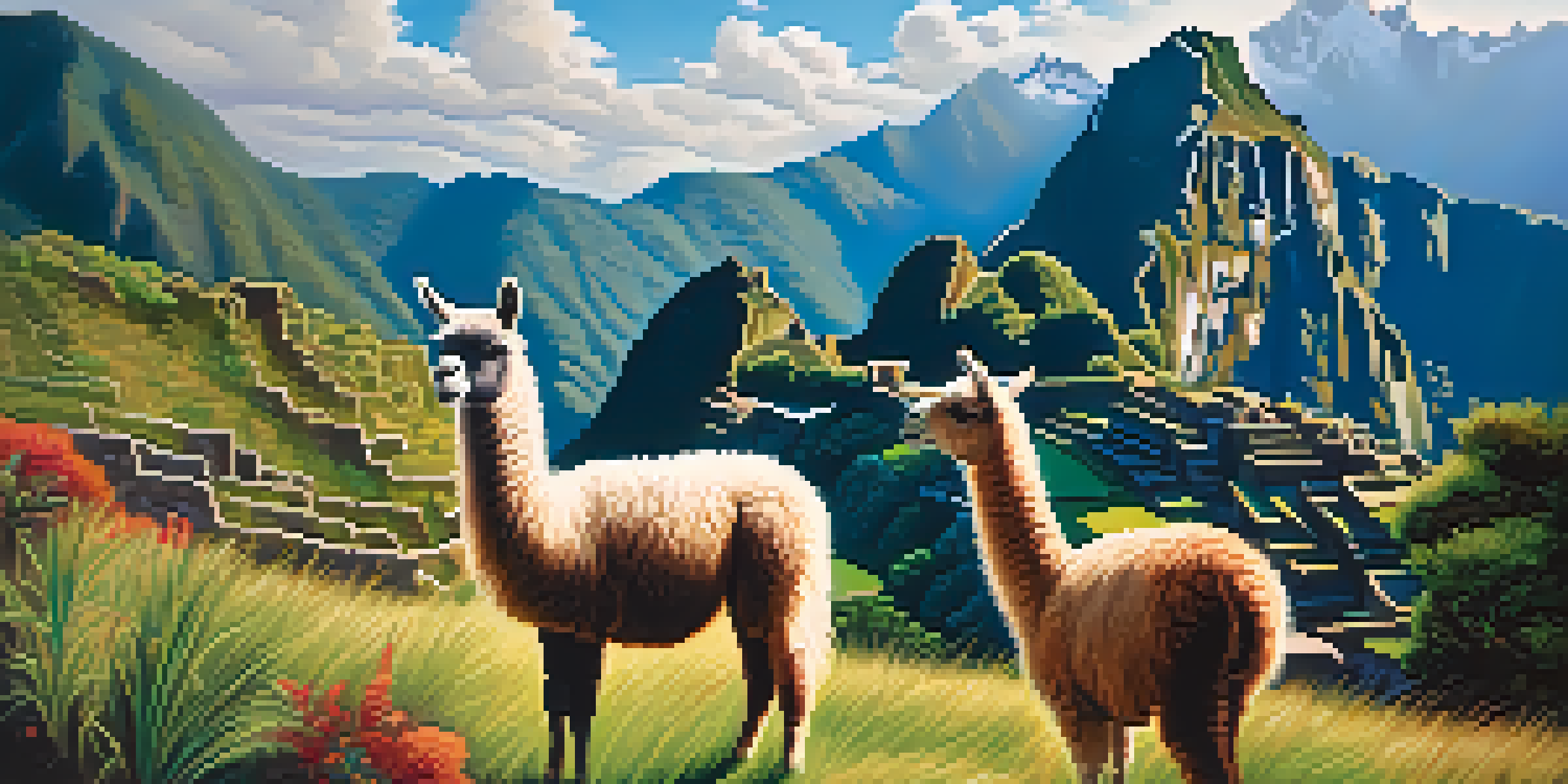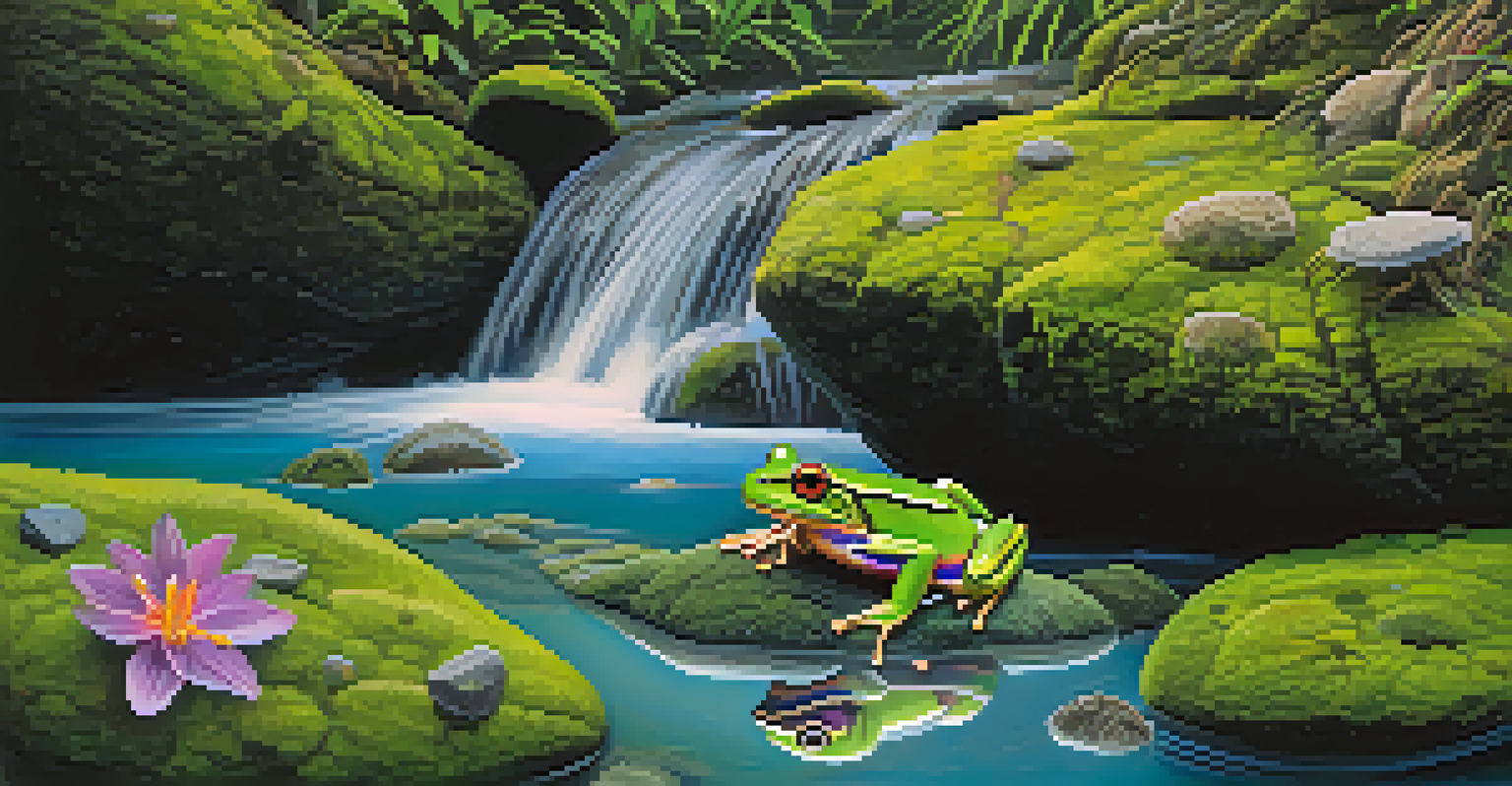Inca Trail Wildlife: Animals You Might Encounter on Your Trek

Introduction to Inca Trail Wildlife and Its Diversity
The Inca Trail is not just a journey through breathtaking landscapes; it's also a vibrant ecosystem teeming with wildlife. As you trek through diverse altitudes and climates, you'll come across various animal species that call this region home. From colorful birds soaring above to elusive mammals lurking in the underbrush, the trail offers a unique opportunity to connect with nature.
In every walk with nature one receives far more than he seeks.
Understanding the wildlife along the Inca Trail enriches your trekking experience. Each animal plays a role in this delicate ecosystem, offering insights into the environmental health of the area. Plus, spotting these creatures can add a sense of adventure and excitement to your journey.
Whether you're an avid wildlife enthusiast or just curious about what you might see, the Inca Trail has plenty to offer. Let's delve into some of the remarkable animals you might encounter during your trek.
Llamas: The Iconic Andean Pack Animals
When trekking the Inca Trail, you're likely to encounter llamas, the iconic animals of the Andes. These gentle creatures are not only vital for transporting goods but are also a symbol of the region's rich cultural heritage. Their friendly demeanor and unique appearance make them a favorite among trekkers.

Llamas are well-adapted to the high-altitude environment, thriving in the rugged terrain. You might see them grazing on the sparse vegetation or resting alongside the trail, offering a perfect photo opportunity. Their presence adds a delightful charm to your trekking experience.
Diverse Wildlife Along Inca Trail
The Inca Trail is home to a rich variety of wildlife, including iconic llamas, majestic condors, and elusive mammals.
As you pass by these wonderful animals, take a moment to appreciate their role in the local ecosystem and culture. They’re more than just a pretty sight; they’re a reminder of the harmonious relationship between humans and nature in this breathtaking landscape.
Spectacular Birds: The Andean Condor and More
Birdwatchers will be thrilled by the avian diversity found along the Inca Trail. Among the most remarkable residents is the Andean condor, one of the largest flying birds in the world. With a wingspan that can reach up to 10 feet, spotting this majestic bird soaring overhead is a breathtaking experience.
The preservation of wildlife and their habitat is not a luxury, but a necessity.
In addition to the condor, the trail is home to various other bird species, including hummingbirds and colorful tanagers. Their vibrant colors and melodious songs create a lively atmosphere as you trek through the lush landscapes. Keep your binoculars handy to catch a glimpse of these feathered friends in action.
Birdwatching along the Inca Trail not only enhances your appreciation for nature but also allows you to connect with the region's biodiversity. Every chirp and flutter adds to the symphony of sounds that accompany your journey.
Mammals of the Andes: Vicuñas and Guanacos
As you ascend the Inca Trail, keep your eyes peeled for vicuñas and guanacos, two relatives of the llama. Vicuñas are known for their fine wool and are often seen grazing on the high-altitude grasslands. They are shy creatures, so spotting them can feel like a special reward during your trek.
Guanacos, on the other hand, are slightly larger and more social. They often roam in groups, making it easier to spot them in the wild. Their agility and grace as they navigate the rocky terrain are truly impressive, showcasing the beauty of wildlife in their natural habitat.
Role of Ecosystem in Trekking
Understanding the roles animals play in their ecosystem enhances the trekking experience and connects you with nature.
Both of these mammals play an important role in their ecosystem, helping to maintain the balance of vegetation in their environment. Observing them in the wild is a reminder of the incredible diversity of life that thrives along the Inca Trail.
The Playful Andean Fox: A Rare Encounter
If you’re lucky, you might catch a glimpse of the elusive Andean fox during your trek. Known for their striking appearance, these small canids are often spotted roaming the hillsides or resting in the shade. Their playful nature and curious demeanor make them a delightful encounter for those fortunate enough to see them.
Andean foxes are essential to the ecosystem, helping to control small rodent populations and maintaining the balance within their habitat. While they are generally shy around humans, they can sometimes be seen foraging for food, adding an element of surprise to your wildlife experience.
Spotting an Andean fox is not guaranteed, but it can certainly add an exciting twist to your adventure. Keep your camera ready and your eyes open; you never know when you might be graced with the presence of this charming creature.
Colorful Frogs: The Hidden Gems of the Trail
While trekking the Inca Trail, don't forget to look down! The trail is home to several species of frogs, including some that are vibrantly colored. These small creatures contribute to the biodiversity of the region and are often found near streams or damp areas, where they thrive.
Frogs play a crucial role in the ecosystem as both predators and prey, helping to maintain the balance of insect populations. Their varied colors and patterns can be a testament to the health of the environment, as many species are sensitive to changes in their habitat.
Importance of Wildlife Conservation
Conservation efforts are vital to protect the unique biodiversity of the Inca Trail against threats like climate change and habitat loss.
Taking a moment to observe these tiny amphibians can add depth to your wildlife experience. They may be small, but their presence is a reminder of the intricate web of life that exists along the Inca Trail.
The Importance of Wildlife Conservation
As we marvel at the beauty of the Inca Trail's wildlife, it's essential to recognize the importance of conservation efforts in this region. Habitat loss, climate change, and human activity threaten many of the species that inhabit these mountains. Awareness and action are crucial if we want to protect this incredible biodiversity for future generations.
Many organizations work tirelessly to promote sustainable tourism and conservation initiatives along the Inca Trail. By choosing eco-friendly trekking options and respecting wildlife habitats, trekkers can contribute to the preservation of this unique environment.

Your trek along the Inca Trail is not just an adventure; it's also an opportunity to support wildlife conservation. Every step taken with awareness can help ensure that these beautiful animals continue to thrive in their natural habitat.